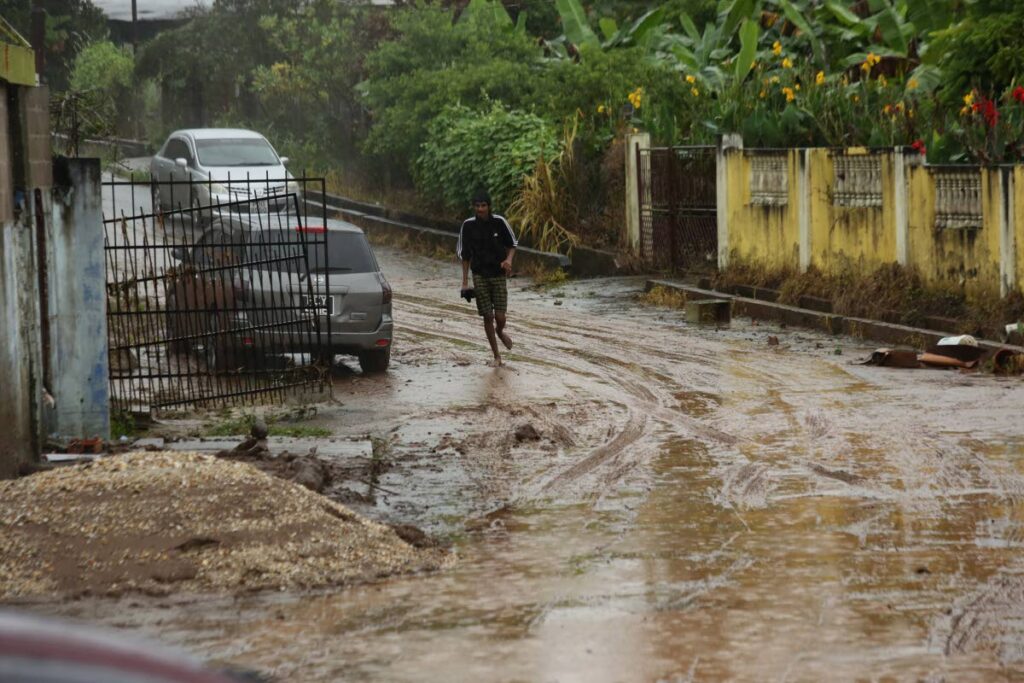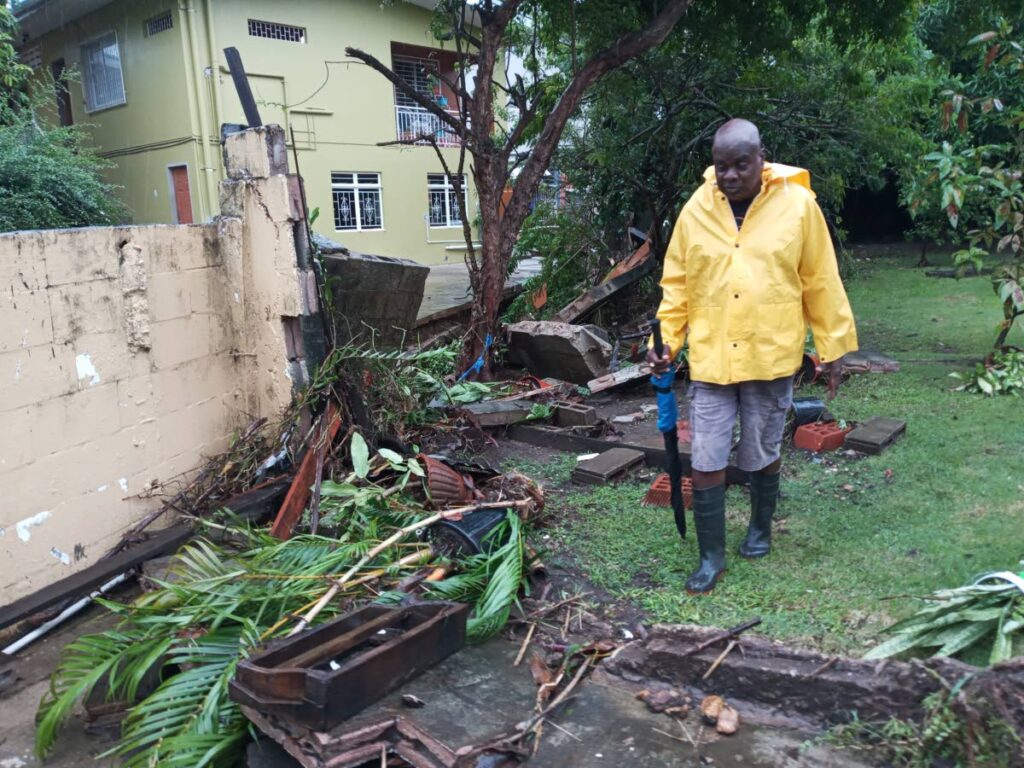How the ODPM responded to tropical wave Invest 91L

Annually, as the hurricane season comes around and the dry season changes to the wet, the Office of Disaster Preparedness and Management (ODPM) has come to expect the re-emergence of one or two self-appointed "disaster experts," making baseless criticisms having done no research.
This article aims first, to refute similar baseless statements and innuendos that were made in an opinion-piece published in Trinidad Guardian on October 8 –Waiting for the ODPM. In that article, the writer attempted to present as fact, his/her perceptions of what the ODPM’s role ought to have been, during and following the passage of tropical wave Invest 91L.
However, the main purpose of this article, is to provide the reader with an insight into the ODPM’s operations and how, working in tandem with other agencies, an integrated approach was taken to manage the response effort and bring relief to citizens.
Disaster "experts" and tunnelled-vision
The passage of Invest 91L resulted in flooding and landslides mainly in three of the 14 municipal corporations – Tunapuna/Piarco, Sangre Grande and Chaguanas – and in seven communities of Tobago.
Being a localised event, in Trinidad, the Ministry of Rural Development and Local Government would have been responsible for responding to the deluge, while in Tobago, responsibility would have fallen to the Tobago House of Assembly (THA).
Finding this approach inadequate, the "expert’s" innovative solution for managing the complexities involved in last week’s crisis lay in one principal strategy. The deployment of all the ODPM’s staff into the field to provide “boots on the ground,” so that they would be working “shoulder-to-shoulder with regional corporations (sic) employees.”
Consequently, with its current staff complement of 30-odd people, the ODPM would have provided the magic bullet, which would have relieved our citizens of their distress in the fastest possible way. This, despite the combined strength of the 14 municipal corporations and the THA numbering in the thousands.
Of course, this overly simplistic solution if followed had severe implications for the nation. First, from an operational perspective, the National Disaster Office would have abandoned all of its ongoing national and regional responsibilities. Second, no consideration would have been given to the ODPM’s responsibility for co-ordinating the activities of the response and support agencies. Neither it seems that any thought was given to the office’s data collection and analytical capabilities, nor its ability to generate and share solutions with agencies. This was particularly critical, given the uncertain and dynamic situation the country was facing at the time.
Strategically, it seems that our tunnelled-vision "expert" also did not give any consideration whatsoever for the ODPM to maintain its responsibility of scoping the landscape for associated cascading effects, nor emerging threats to the nation.
The writer linked his recommendations to rather unfortunate statements expressed that week by the MP for Barataria/San Juan Saddam Hosein. The MP, in his statement carried on national television, alluded that the ODPM and not the local authorities, was the entity that was responsible for managing the flood response. As such, he felt it should not have been allocated any money in the national budget.
The MP’s view of the locus of control for managing a level one response clearly contradicts with international best practice. Such approaches always encourage that national and international resources should be employed in support of local authorities. Naturally, this is because the local authorities better than anyone else, know "the lay of the land" and its idiosyncrasies.
Perhaps the MP could be forgiven as his utterances occurred in the "heat" of an exchange between him and the Minister of National Security Fitzgerald Hinds. The minister, as the office holder with responsibility for the ODPM, wasted no time however, to educate his Parliamentary colleague of the ODPM’s co-ordinating role in such circumstances. Unfortunately, this part of the exchange was not given similar coverage.
The National Response Framework
The disaster management community in TT acts in accordance with the protocols established by the National Response Framework. This system organises responses on a tiered basis ranging from Levels 1-3, depending on the actual or anticipated severity of an event.
Last week, when the Met Service issued an adverse weather, Yellow Level Alert, anyone with some experience in disaster operations, would have known that the situation was going to be approached as a Level 1 response. Practitioners also would have known that this approach would be maintained, unless the Met Service changed the alert levels to orange or red, which would have triggered a corresponding change in the response levels. In such situations, the ODPM’s posture also would change and it would activate the National Emergency Operations Centre. Here, it is important to note that at no point throughout the three-day event, did the Met Service see the necessity to raise the adverse weather alert level beyond yellow. The only increase in the alert levels was for a riverine flood alert after the passage of the system.

At a Level 1 response, the assets and personnel employed by the local disaster response bodies i.e. the Disaster Management Units of the Ministry of Rural Government and Local Government and the Tobago Emergency Management Agency (TEMA) (the latter supported by the Division of Infrastructure, Quarries and Urban Development), are anticipated to be sufficient to manage an emerging threat(s).
When combined, these agencies’ capacities include organic assets, CEPEP, URP and the Community Emergency Response Teams (CERTs). In addition to these are the area fire and police services’ elements and if necessary, personnel from the National Reforestation Programme. Yet still, using the all-of-corporations/TEMA concept, additional resources could be sourced from corporations/communities that have not experienced any or inconsequential impacts. Should all these resources become exhausted, also available are the ODPM, Red Cross and NGO’s volunteers. Finally, and even before transitioning to a Level 2/3 response, the Defence Force’s Engineer Battalion makes available, a small cadre of troops (note this is before the Defence Force’s full might is brought to bear on a situation, which occurs at Level 2 and 3). The system therefore is a scaleable one.
These Standard Operating Procedures are well-established and practised by the various national response agencies.
The ODPM – co-ordination
Simultaneously, while arrangements are being made at the local level, the ODPM, as the National Disaster Office, is managing its responsibilities at the local, national and regional levels.
Depending on the anticipated severity of a threat, the ODPM would take on a role similar to a maestro conducting an orchestra, creating synergy and harmony amongst the various players. This was the case last week while planning for Invest 91L. Despite being categorised as a Yellow Level Alert, because of its sheer size, forecast precipitation and wind gusts, the ODPM took the initiative to convene the multi-agency co-ordinating group, to prepare for the incoming system.
Hence, as is common practise, the ODPM arranged with the Met Service for the participants to be briefed about the impending threat and established a platform for information sharing and reporting on states of readiness, concerns, etc.
On October 3, three days before the passage of the tropical wave, the ODPM held the first multi-agency co-ordinating meeting, which was attended by over 20 national agencies. Preceding this meeting, were a series of bilateral meetings, held with the Met Service and some of the key response agencies. Additionally, the ODPM held two other co-ordinating meetings, spanning the period of the system’s passage. These meetings allowed agencies to share information on impacts, assessments, support provided to citizens and future plans and actions. In addition to these meetings, during the three-day period, the ODPM undertook several other missions. These activities included but were not limited to: deployment of reconnaissance teams to conduct on-site assessments at key locations along the Caroni River and other waterways, which aided flood response and the Met Service's issuance of riverine flood alerts; deployment of high-water vehicles in support of operations within impacted corporations; coordination with the Engineer Battalion for troops to be deployed to Cumaca to conduct landslide clearance operations and sandbagging support to residents of Real Spring Housing Development; collaboration with the Fire Service for its Search and Rescue team to be deployed to rescue/recover the late Theresa Layne (may she RIP); co-ordination with the NGO, SEWATT for ready-to-eat meals to be provided to impacted families and response personnel deployed in the field; attendance at TEMA’s meetings for co-ordinating Tobago’s response and dispatch of additional supplies to Tobago to support response operations; provision of similar support to response agencies in Trinidad; keeping national decision-makers, response agencies; the media and the public apprised about the adverse weather and its effects, and provision of information on initiatives being undertaken and recommended safety measures; and flood mitigation assessments to capture and share data with government agencies responsible for immediate and long-term flood alleviation measures.
TT’s Disaster Response Framework mirrors international best practice. Like any other country, it is not perfect, but it provides a realistic guide for both the disaster management community and the wider national community, to respond to a multiplicity of hazards.
The ODPM hopes that this article helps the national community and in particular, assists our "disaster experts" to become more cognisant of the critical role the ODPM plays, even at a local level of response. Additionally, it hopes people are better able to appreciate that a high performance organisation always must be ready, should the situation ever escalate to a national or a regional response.
Simultaneously, even when responding to disruptive situations, the ODPM also has to remain focused on its other ongoing responsibilities such as national disaster prevention, mitigation, preparedness, recovery, rehabilitation and capacity building.

Comments
"How the ODPM responded to tropical wave Invest 91L"